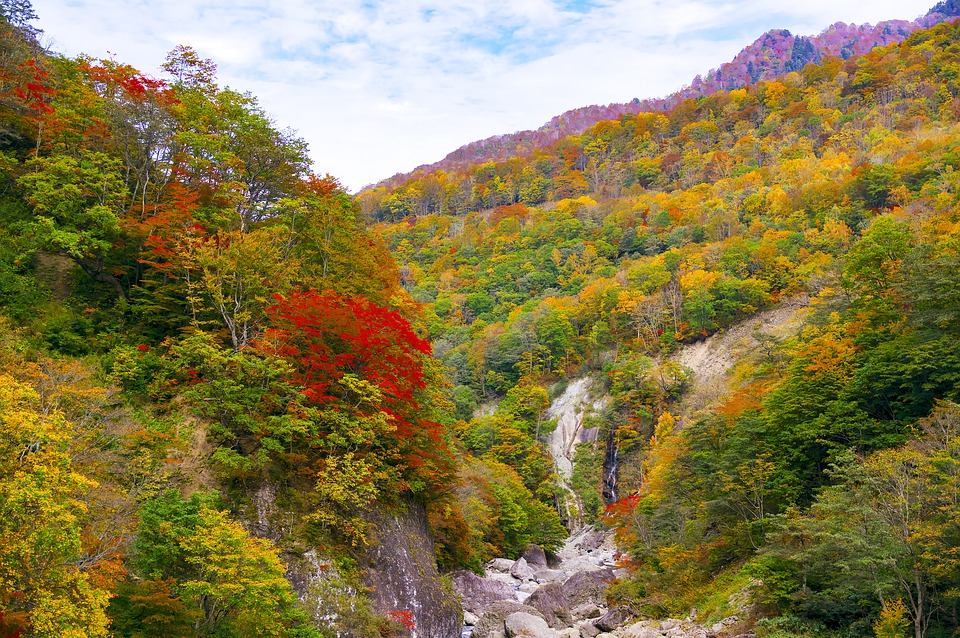Niigata Prefecture lies on the eastern coast of Honshu island, with views of the Sea of Japan. It is composed of twenty cities, and several towns and villages, and its capital city is Niigata. It is blessed with scenic nature and landscapes, incredible historical and cultural spots, delicious cuisines, and fun festivals.

How To Get To Niigata
Getting to Niigata is possible by air, railway, or bus.
Niigata Airport in the city of Niigata is located on the coast, about seven kilometres from Niigata Station. It serves a number of international and domestic flights operated by All Nippon Airways, flying to and from Osaka, Naha, Nagoya, Sapporo, and Tokyo; Fuji Dream Airlines, with routes to and from Fukuoka and Nagoya; Japan Airlines, connecting the prefecture to Osaka and Sapporo; Far Eastern Air Transport, flying to and from Taipei; and Korean Air and China Eastern Airlines, serving Seoul and Shanghai, respectively.
By high-speed rail, Niigata is linked to the rest of Japan by the Joetsu Shinkansen Line and the Hokuriku Shinkansen Line.
The Joetsu Shinkansen Line passes through Yuzawa, Minamiuonuma, Nagaoka, Sanjo, and Niigata, and the Hokuriku Shinkansen Line through the cities of Joetsu and Itoigawa.
There are also non-Shinkansen lines that provide access to Niigata, including Shin’etsu Line, Yahiko Line, Uetsu Line, and Hakushin Line by JR East; Echigo Tokimeki Railway; and Hokuetsu Express Hokuhoku Line.
Many highway bus companies offer direct routes to Niigata from other cities, such as Tokyo and Osaka. Check out the Willer Express website and Japan Bus Online for timetables, ticket prices, availability, reservations, and other information.
Top Attractions in Niigata
Niigata
On the northwestern coast of Honshu Island lies the city of Niigata, the capital prefecture of Niigata. Home to around a million people, it has a long history of being an important port town in the region.
- Niigata Prefectural Botanical Garden – A 19.8-hectare arboretum and botanical garden, the Niigata Prefectural Botanical Garden is home to a wide variety of cherry trees, conifers, and aromatic herbs. It has a 30-metre-tall, 42-metre-wide dome-shaped greenhouse that houses more than 500 species of tropical, aquatic, and arid plants.
- Niigata Matsuri – A three-day celebration held every first weekend of August, the Niigata Matsuri is a lively and vibrant spectacle highlighted by a big parade of over 15,000 dancers dressed in traditional Japanese clothing and dancing to traditional music.
- Iwamuro Onsen – Known for its tranquil and relaxing atmosphere, Iwamuro Onsen is a small hot spring town in the city of Niigata with a good collection of bath houses that only offer natural hot spring waters that can help alleviate the symptoms of nerve pain, skin diseases, fatigue, and other illnesses.
Echigo Tsumari
Occupying 760 square kilometres of some of the most stunning landscapes in this part of Japan, Echigo Tsumari is a rural area in Niigata Prefecture, popular for hosting a big summer art festival every three years.
Known as the Echigo Tsumari Art Triennale, the event is conducted for a number of weeks in the summer. It features hundreds of artworks displayed across the vast open-air venue, composed of hills, forests, and rice fields. It aims to create art pieces that fuse creativity with culture and environment.
For information on the next event, visit the Echigo Tsumari Art Triennale official website.
Yuzawa
A small town with only around 8,000 residents, situated in the southwestern portion of the Niigata Prefecture, Yuzawa is a favourite winter destination in the region, thanks to its top notch ski resorts and onsen.
At around the second week of November, the town’s twenty or so ski resorts start to open. Each offer a variety of skiing and snowboarding facilities, lifts, and, of course, high quality powdered snow.
Because of the rush of tourists once this time of the year comes, the town also has several accommodations available, including hotels and ryokan. It is common to soak in authentic natural hot spring water at any of the bath houses in the area, after a day of having fun in the snow.
Yuzawa Town Tourist Association’s official website provides more information on the ski resorts, activities to do, accommodations, events, and transportation options.
Sado Island
A large symmetrical island off the coast of Niigata Prefecture, Sado Island is a natural resource rich island that used to be an exile location for banished Japanese people, which included some prominent figures.
In the early 8th century, a poet named Hozumi no Asomi Oyu became the first known dissident to be sent to the remote island as punishment for his criticisms against the emperor. In the 13th century, former Emperor Juntoku was exiled there for his involvement in the Jokyu War. And, in 1434, Noh dramatist Zeami Motokiyo was sent there for undisclosed reasons. The last exile happened in 1700.
Today, Sado Island is a tourist destination with an abundance of magnificent sceneries, and interesting historical and cultural sites.
- Sado Gold Mine – A long time ago, the Sado Gold Mine was the number one gold mine in Japan, producing approximately 400 kilogram of gold and modest amounts of copper and silver every year. It played a major role in the funding of the Tokugawa Shogunate throughout Edo Period. Nowadays, it has a museum with exhibits and items relating to the gold mining process back in the day, and two walking trails that pass through the mining tunnels. Opening hours, ticket prices, and other information are available on Sado Gold Mine’s official website.
- Earth Celebration – A highly anticipated music festival on Sado Island, Earth Celebration is an annual event that features several musicians who perform alongside Sado Island’s homegrown taiko group Kodo. It is held for three days in August, and is attended by thousands of Japanese and foreign tourists.
- Senkaku Bay – A Quasi National Park along Sado Island’s northwestern coast, Senkaku Bay offers an abundance of stunning natural sights and landscapes. It has several observation points that provide breathtaking views of the cliffs and the bay, and sightseeing cruise tours on glass bottom boats. The Senkaku Bay Ageshima Park and Cruises website has more information available.
Getting Around Niigata
Trains offer fast and convenient access across the different areas of Niigata Prefecture.
The JR Joetsu Shinkansen Line passes through Yuzawa, Minamiuonuma, Nagaoka, Sanjo, and Niigata, and the Hokuriku Shinkansen Line stops in the cities of Joetsu and Itoigawa. Meanwhile, Echigo Line runs from Kashiwazaki and Niigata. You can use Hyperdia to look up train routes, timetables, and other information.
Niigata Prefecture’s official travel website provides more detailed information for tourists.
Weather in Niigata
In the summer, Niigata’s daily temperatures are usually in the high 20s degrees Celsius, with August as the hottest month. This season also sees a lot of rainfall, with July and September having the most rainy days. In winter, days are between 0 and 5 degrees, and also experience frequent rain and snow, especially in December and January. Spring and autumn are the driest seasons, with mild temperatures at around 15 degrees.
